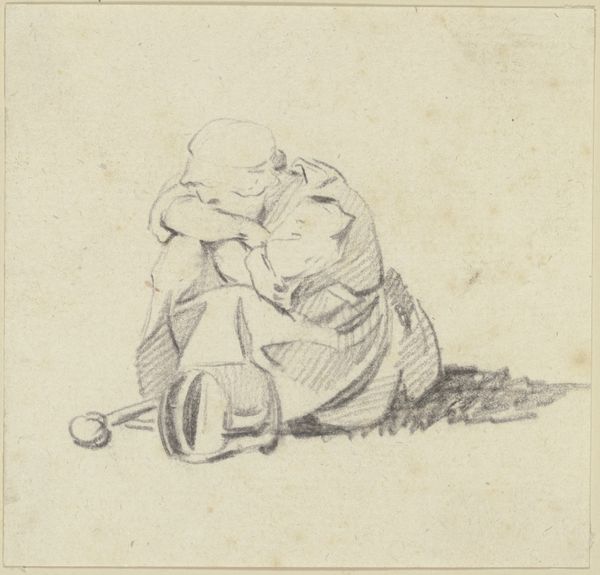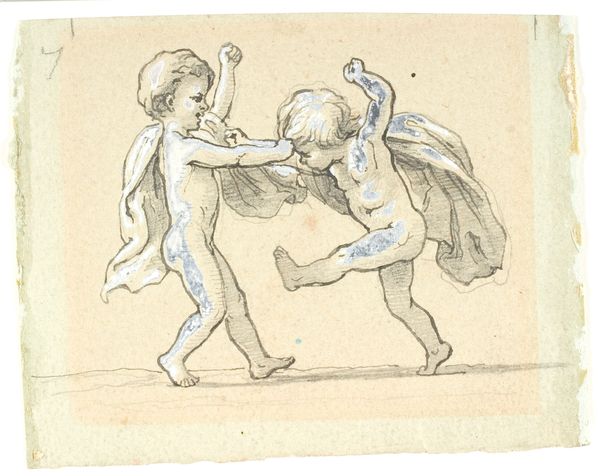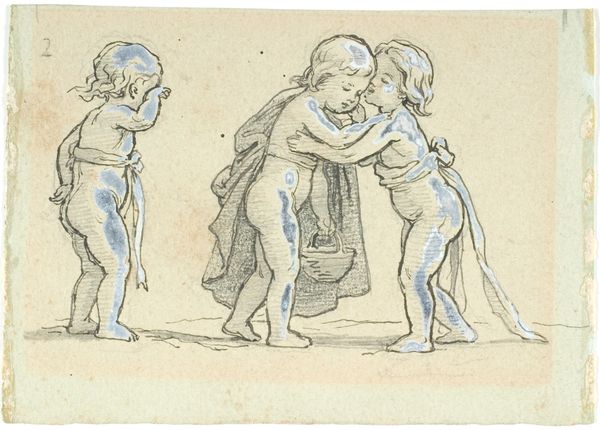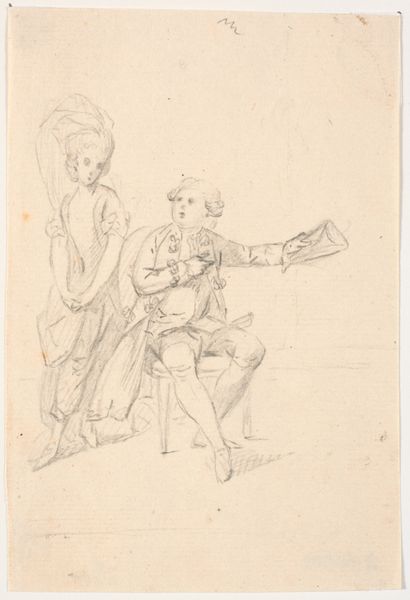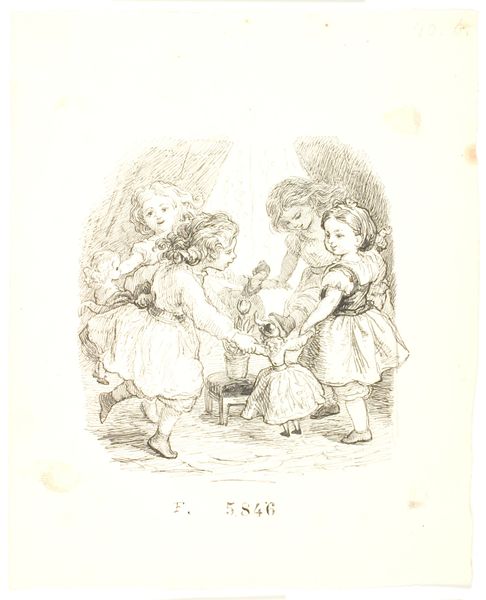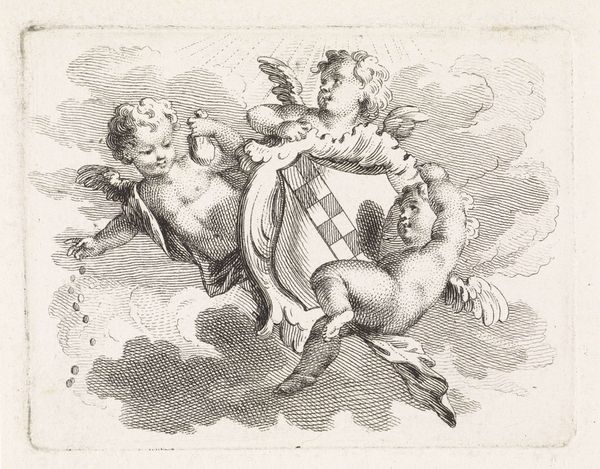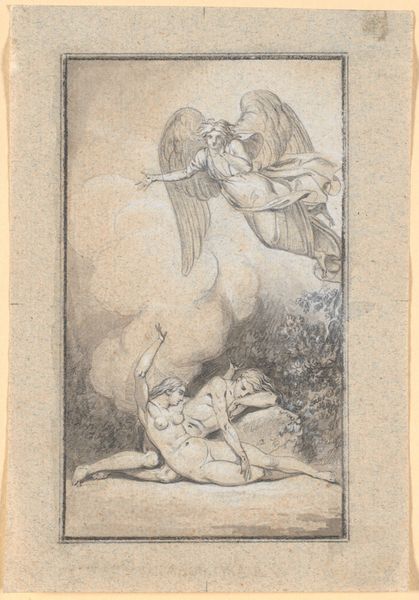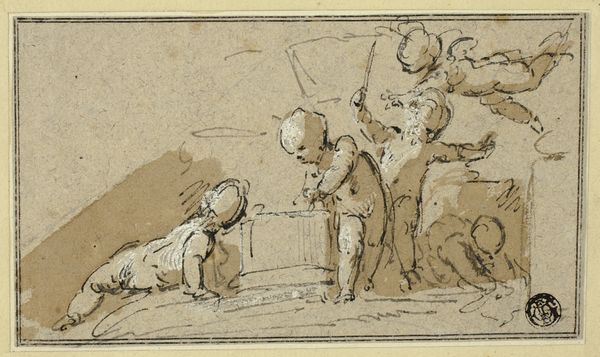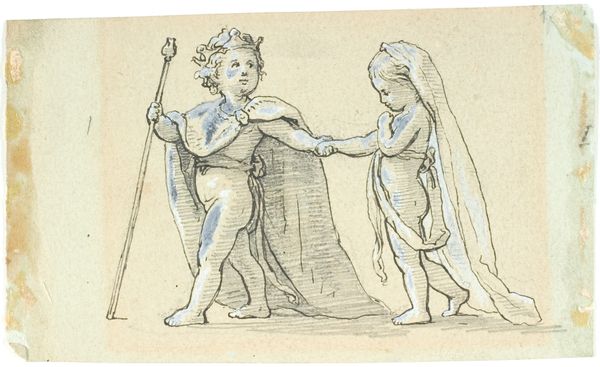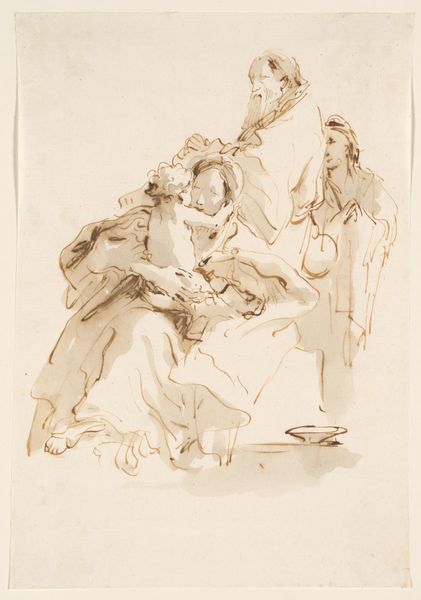
Dimensions: 88 mm (height) x 105 mm (width) (bladmaal)
Editor: We’re looking at “Vignet med en dreng, der frier til en pige,” or "Vignette with a boy proposing to a girl," a drawing from 1878 by Lorenz Frølich. It’s a small, delicate work rendered in pencil and what looks like watercolor. I’m struck by its intimate and almost playful quality. What draws your eye to this piece? Curator: For me, the interest lies in the labor, or rather the suggestion of labor. This is a sketch, an underdrawing if you like. We're seeing the *process* of image making laid bare. How does Frølich’s material process reflect or shape the social relationship being portrayed, a boy proposing to a girl? Editor: That's an interesting point. I was focusing on the subject matter and the sort of… innocent romance depicted. But seeing it as a material process makes me consider how these light pencil strokes are almost like fleeting thoughts, experiments that show an economy of means in a traditionally academic format. What does the 'means of production' tell us here? Curator: Exactly! Consider the contrast – a highly sentimental scene, love and commitment – rendered through what is essentially a disposable medium. Pencil, watercolour…these are inexpensive materials, readily available. The lightness of touch you noted becomes incredibly important. Is this meant to be a completed artwork or something else, something more experimental and immediate? Editor: It seems to me that it's testing a certain style in relation to its content. He's depicting a sweet narrative, but is there also something a bit ironic in how this high romantic feeling is done in a casual, almost disposable, way? It doesn't quite resolve, but sits nicely somewhere between the final illustration and a 'personal sketchbook' artwork, as the labels say. Curator: The apparent 'incompleteness' becomes central. What does this tell us about the value we assign to 'finished' versus 'unfinished' artistic labour? Does the ease of its making devalue it? I think not; it reveals it! Thanks for allowing me to talk through these points. Editor: Thanks, that's given me a lot to think about regarding artistic intention and materials, how one informs the other!
Comments
No comments
Be the first to comment and join the conversation on the ultimate creative platform.

